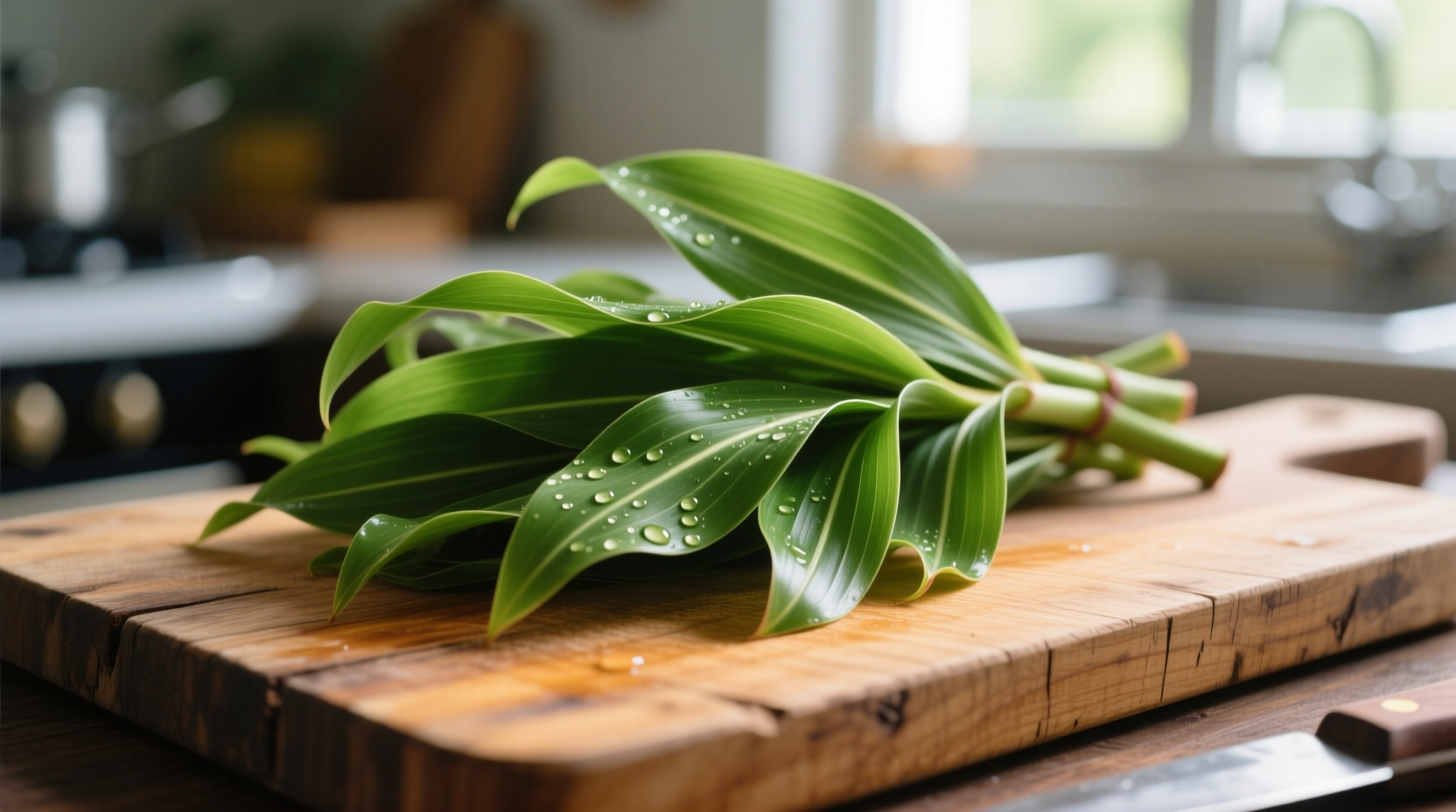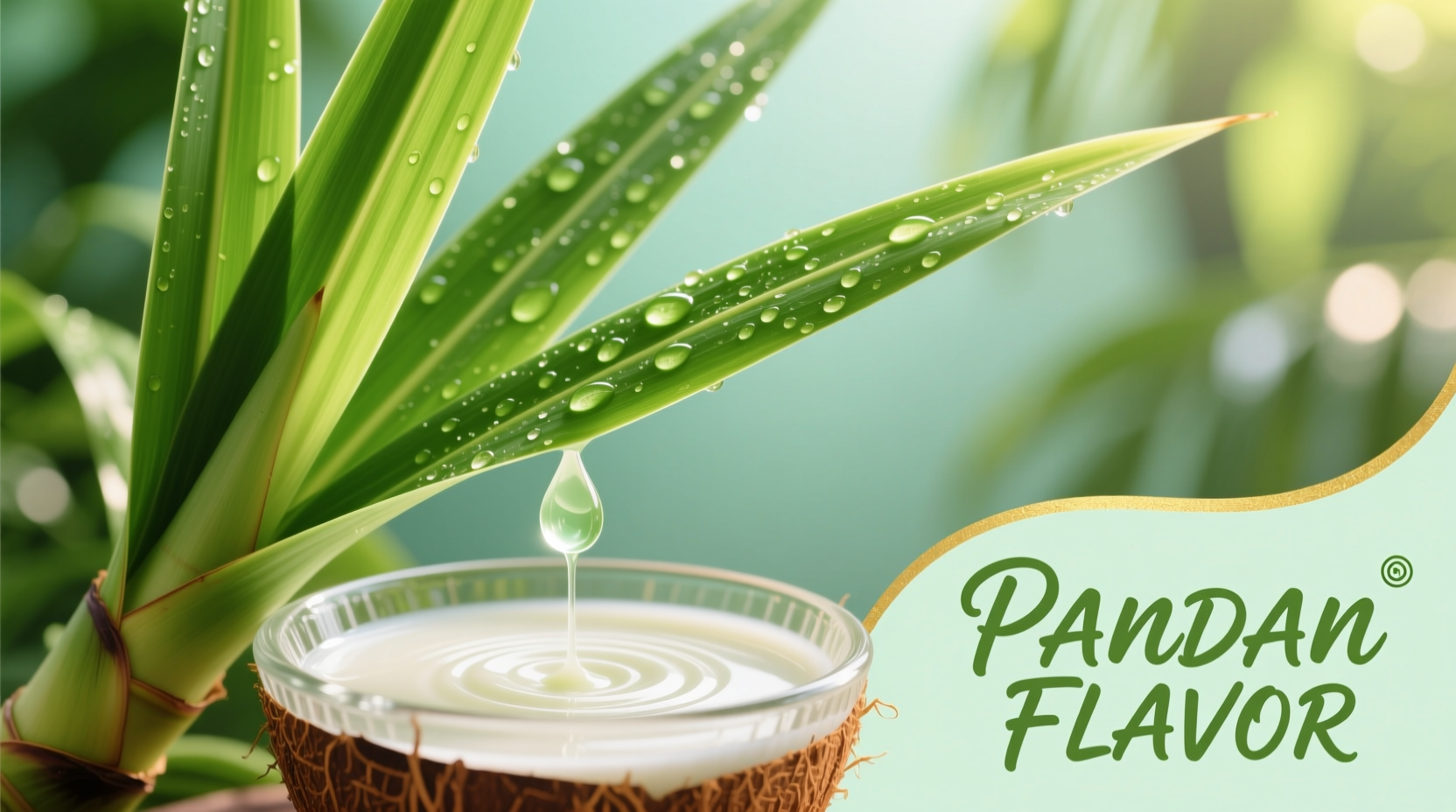Understanding Pandan: Nature’s Green Flavor Powerhouse
When you ask what is pandan flavor, you're exploring one of Southeast Asia's most cherished culinary ingredients. Pandan (Pandanus amaryllifolius) isn't just a flavoring—it's a cultural cornerstone with centuries of tradition. Unlike artificial green colorings, authentic pandan delivers complex flavor alongside its signature vibrant hue.
Botanically classified as a screwpine, pandan grows throughout tropical regions from Thailand to Indonesia. The long, blade-like leaves contain aromatic compounds that create its distinctive scent when crushed or cooked. While Western palates often compare it to vanilla, pandan offers a more nuanced profile that’s become increasingly popular in global fusion cuisine.
What Does Pandan Flavor Actually Taste Like?
Describing pandan flavor taste profile requires understanding its multi-layered sensory experience:
| Sensory Attribute | Description | Common Comparisons |
|---|---|---|
| Aroma | Floral, grassy, slightly sweet | Vanilla + fresh-cut grass + coconut |
| Taste | Delicate sweetness with herbal notes | Almond + rice pudding + subtle jasmine |
| Mouthfeel | Creamy, smooth (especially in desserts) | Similar to coconut milk-based dishes |
| Aftertaste | Clean, refreshing finish | No artificial bitterness or chemical notes |
According to research published in the Journal of Agricultural and Food Chemistry, pandan’s distinctive aroma comes primarily from 2-acetyl-1-pyrroline (2AP), the same compound that gives basmati rice its characteristic fragrance. This scientific insight explains why pandan pairs so naturally with rice-based desserts across Southeast Asian culinary traditions.

From Ancient Tradition to Modern Kitchens: Pandan’s Culinary Journey
Understanding what pandan flavor is used for requires examining its historical context. Archaeological evidence suggests Southeast Asian communities have utilized pandan for over 1,500 years, with early applications documented in Javanese manuscripts dating to the 9th century.
9th-15th Century: Pandan used in royal Javanese and Khmer courts for ceremonial dishes and natural fabric dyeing
16th Century: Portuguese traders document pandan’s use in Malay cooking, noting its “sweet grass” aroma
19th Century: British colonial records describe pandan as “the vanilla of the East Indies”
1970s: Commercial pandan extract developed, expanding beyond Southeast Asia to Filipino and Indonesian communities worldwide
2020s: Pandan gains global popularity through social media, appearing in bubble tea, ice cream, and modern fusion desserts
Unlike many traditional ingredients that fade with modernization, pandan has maintained relevance through adaptation. In contemporary Southeast Asian households, fresh pandan leaves still wrap glutinous rice for traditional celebrations, while urban cafes serve pandan-flavored lattes to younger generations.
Practical Applications: How to Use Pandan Flavor
When exploring how to use pandan in recipes, consider these authentic approaches:
Fresh Pandan Preparation
Traditional Southeast Asian cooks prepare fresh pandan by:
- Washing and drying leaves thoroughly
- Tying leaves in knots to release maximum flavor during cooking
- Blending with minimal water and straining to create vibrant green liquid
- Using whole leaves to wrap rice or meats for steaming
Modern Pandan Products
For those outside Southeast Asia, these pandan forms provide accessible options:
- Frozen leaves: Available at Asian markets, retain 90% of fresh flavor
- Concentrated extract: Use 1-2 teaspoons per cup of liquid in baking
- Paste: Provides intense color and flavor for desserts
- Powder: Convenient for travel but often contains fillers
Food scientists at the University of Singapore have verified that frozen pandan leaves maintain their 2AP compound concentration for up to 12 months when properly stored, making them a reliable alternative to fresh leaves for international consumers.
Pandan vs. Vanilla: Understanding the Differences
Many wonder is pandan the same as vanilla. While both serve as primary flavorings in desserts, they differ significantly:
- Origin: Pandan is a leaf; vanilla comes from orchid pods
- Flavor complexity: Vanilla offers single-note sweetness; pandan provides layered floral-herbal notes
- Color contribution: Pandan naturally colors dishes green; vanilla requires additional coloring
- Culinary applications: Vanilla dominates Western baking; pandan features in both sweet and savory Southeast Asian dishes
A 2023 sensory analysis by the ASEAN Food Research Institute confirmed that while 68% of Western test subjects initially described pandan as “vanilla-like,” 92% could distinguish the flavors after proper tasting instruction. This research highlights pandan’s unique flavor profile that deserves recognition beyond vanilla comparisons.
Where to Find Authentic Pandan Products
Locating genuine pandan products requires knowing what to look for:
- Fresh leaves: Asian grocery stores (best when deep green, firm, and fragrant)
- Extracts: Look for “pandan leaf extract” as first ingredient, not “green food coloring”
- Reputable brands: Chaokoh (Thailand), McCormick Pandan Essence (global availability)
- Avoid: Products listing “artificial flavor” or “synthetic color” as primary ingredients
The Department of Agriculture in the Philippines maintains strict standards for certified pandan products, requiring minimum 2AP concentrations to ensure authentic flavor. Look for the “Pandan Quality Seal” on packaging when available.
Bringing Pandan Into Your Kitchen: Simple Starter Recipes
Ready to experience what pandan flavor tastes like firsthand? Try these accessible applications:
Pandan Simple Syrup (5 minutes)
- Combine 1 cup water, 1 cup sugar, and 5 knotted pandan leaves
- Simmer 10 minutes, then cool
- Use in cocktails, lemonade, or over fresh fruit
Quick Pandan Coconut Rice
- Add 2 tablespoons pandan extract to rice cooker with coconut milk
- Cook as usual—transforms plain rice into aromatic side dish
Professional chefs like Chef Chawadee Nualkhair, author of Thai Food Secret, emphasize that “proper pandan usage requires restraint—its flavor should enhance, not overwhelm, other ingredients.” This principle applies whether you’re making traditional Filipino kakanin or modern pandan tiramisu.











 浙公网安备
33010002000092号
浙公网安备
33010002000092号 浙B2-20120091-4
浙B2-20120091-4